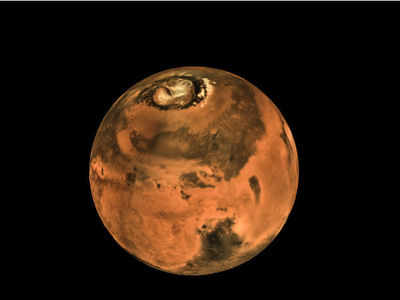- News
- Science News
- Two years on, MOM studying Martian minerals with Nasa aid
This story is from September 24, 2016
Two years on, MOM studying Martian minerals with Nasa aid
On Saturday, the Rs 450-crore mars orbiter mission (MOM) completed two years around the Martian Orbit, outliving its estimated life span of six months by a year-and-a-half. Among the major studies the mission is conducting is the joint morphological studies using the Mars Colour Camera (MCC)

BENGALURU: On Saturday, the Rs 450-crore mars orbiter mission (MOM) completed two years around the Martian Orbit, outliving its estimated life span of six months by a year-and-a-half.
The Indian Space Research Organisation’s (Isro) biggest project yet, MOM, has not only put India on the global map, but has also provided our scientific community a treasure of data about the planet that has been the most exciting one for Earthians.
Among the major studies the mission is conducting is the joint morphological studies using the Mars Colour Camera (MCC) and the high resolution mineralogical data with the Nasa’s Compact Reconnaissance Imaging Spectrometer for Mars (CRISM) data.
“This will enable identification of different minerals like sulphates and ferrous based compounds on the surface of Mars,” an Isro spokesperson said. Isro also said that MOM has completed comprehensive imaging of the two moons of Mars—Phobos and Deimos—which has revealed new details about these moons.
Data from the camera has helped in understating the sublimation process on the Martian north pole, where carbon-di-oxide and ice cover changes significantly as Mars enters into northern hemisphere summer.
Further, Isro has made public the data sets obtained from Mars insertion on September 24, 2014 to September 23, 2015. Senior scientists from Isro have said that the MOM, which was originally meant for six months completing two years has not only brought cheer to Isro scientists but has also helped them in understanding technology that has helped better designing and building of other satellites.
During its tenure around the Red Planet, MOM has already seen one black-out phase during an eclipse and one white-out phase. During both periods the spacecraft was completely autonomous without any help from the ground.
The spacecraft will now see another eclipse early next year, again putting to test its ability to work autonomously.
The Indian Space Research Organisation’s (Isro) biggest project yet, MOM, has not only put India on the global map, but has also provided our scientific community a treasure of data about the planet that has been the most exciting one for Earthians.
Among the major studies the mission is conducting is the joint morphological studies using the Mars Colour Camera (MCC) and the high resolution mineralogical data with the Nasa’s Compact Reconnaissance Imaging Spectrometer for Mars (CRISM) data.
“This will enable identification of different minerals like sulphates and ferrous based compounds on the surface of Mars,” an Isro spokesperson said. Isro also said that MOM has completed comprehensive imaging of the two moons of Mars—Phobos and Deimos—which has revealed new details about these moons.
Proudly claiming that the mission objectives of MOM have been achieved, Isro said in a statement: “...At present MOM and all its scientific payloads are in good health and it continues to provide valuable data of Mars surface and its atmosphere. The increased duration of observation of Mars by five scientific payloads is enhancing the planetary science data and also enabling coverage of Mars in different seasons.”
Data from the camera has helped in understating the sublimation process on the Martian north pole, where carbon-di-oxide and ice cover changes significantly as Mars enters into northern hemisphere summer.
Further, Isro has made public the data sets obtained from Mars insertion on September 24, 2014 to September 23, 2015. Senior scientists from Isro have said that the MOM, which was originally meant for six months completing two years has not only brought cheer to Isro scientists but has also helped them in understanding technology that has helped better designing and building of other satellites.
During its tenure around the Red Planet, MOM has already seen one black-out phase during an eclipse and one white-out phase. During both periods the spacecraft was completely autonomous without any help from the ground.
The spacecraft will now see another eclipse early next year, again putting to test its ability to work autonomously.
End of Article
FOLLOW US ON SOCIAL MEDIA
